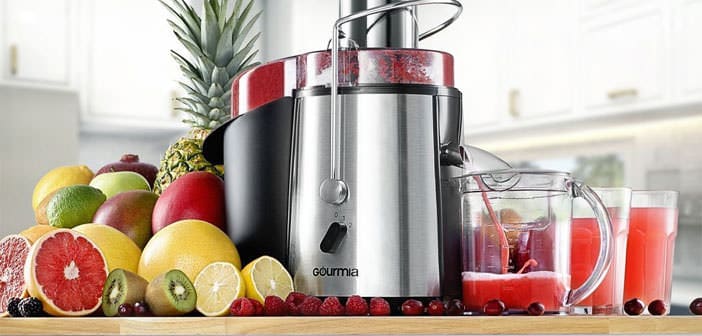Blender or Extractor: Which is Better? Features and Differences
Is it better to buy a blender or an extractor? What are the differences between centrifuge and smoothie, and what benefits do they give our bodies? You are in the right place if you have ever asked yourself at least one of these questions.
We discover the features and advantages of the two appliances, trying to understand how to choose the best appliance according to your needs and tastes.
Smoothies, juices, extracts, centrifuges, smoothies… there are many natural drinks based on fruit and vegetables, and there is a lot of confusion. Although they all look alike, they are very different in preparation and characteristics, and each type has its particular benefits.
They are all healthy drinks but differ in texture and nutritional properties. For this reason, before deciding whether to buy a blender or an extractor, you should know exactly what results you will get. So let’s try to do some clarity.
Table of Contents
The Blender
The best-known of the two is the blender. Its operation is based on the rotating blades’ speed and efficiency: fruit and vegetables are chopped and pulverized until a mixture of juice and pulp is obtained. The result is a homogeneous and fiber-rich drink with no waste.
The blender preserves the properties of the ingredients used. Fibers are important for our body: they help the intestine, lower cholesterol, and promote toxins’ expulsion. The preparations that can be obtained are different, from traditional juices to tasty smoothies and smoothies, adding milk (including vegetable ones), ice, frozen fruit, and anything that suggests creativity.
The blender is handy for preparing bases for more elaborate recipes, such as desserts, cakes, creams, and quiches.
There are different types on the market, from versatile hand blenders to powerful food processors.
The Extractor
The extractor leverages the opposite principle: slowness. As a result, it is less powerful and works with fewer revolutions per minute.
The advantage of low speeds is that they avoid heating the ingredients, altering their properties, and preserving enzymes and vitamins. The result is the so-called “live juices”: drinks rich in water, vitamins, enzymes, and mineral salts but low in fiber.
The extractor or centrifuge squeezes the fruit and separates it from the fibers expelled separately as waste material. Can reuse the scraps: prepare tasty energy bars, use them in pastry doughs, or make ice creams and sorbets.
Being fiber-free, the juices obtained are lighter than smoothies and ideal for those with intestinal problems or digestive difficulties. But be careful: they are also less filling than a traditional smoothie. They can be eaten at breakfast, as a snack, and any time of the day, but don’t forget to supplement your diet with the right amount of fiber from other foods.
Some suggestions for creating the first fruit and vegetable centrifuges:
- Cucumber, apple, and melon.
- Pineapple, carrot, and celery.
- Apple, celery, and beetroot.
- Cucumber and lime.
- Plums, peaches, apples, and lemons.
- Carrot, tomato, and celery.
Then you can indulge yourself by creating original and tasty mixes.
So, is it a better blender or an extractor?
As we have seen, they are very different tools designed to prepare drinks with different characteristics and properties. For example, those who need to increase their fiber intake will opt for a blender, while those who need vitamins and minerals but have digestive difficulties will choose an extractor.
Those who do not have special needs can rely exclusively on their tastes, choosing more or less consistent and full-bodied drinks.
Consuming the right quantities of fruit and vegetables is important for our bodies. Having a blender or extractor can be a stimulus to supplement your diet and improve your health accordingly.

